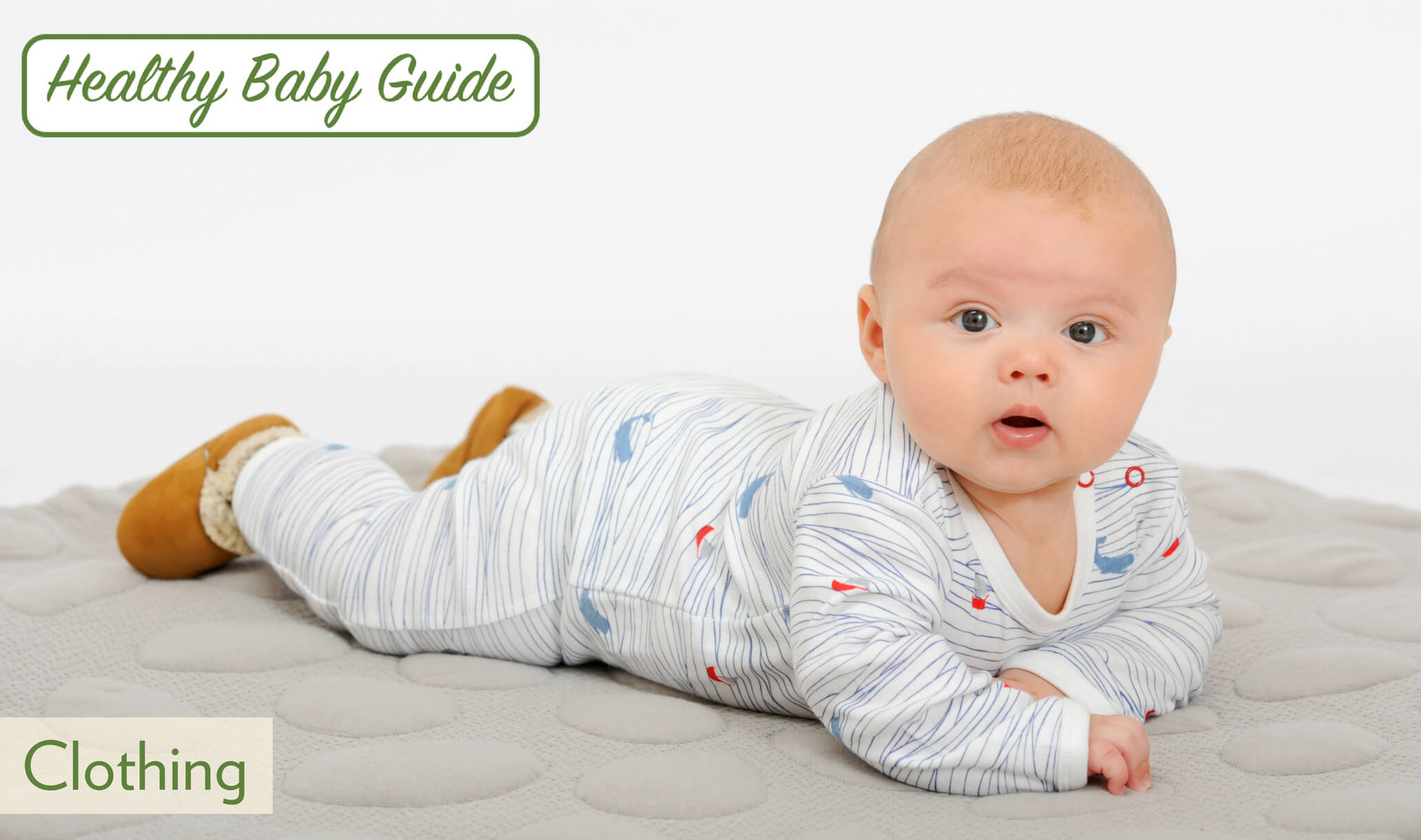Healthy Baby Guide to Clothing
Dressing your little one can be one of the most fun jobs of a new parent. From onesies to footies, these tiny clothes are so irresistibly soft and adorable. Since clothing is in constant contact with baby’s skin, it is important to choose items made of organic cotton and non-toxic dyes.
What You Should Know About Non-Organic Cotton
A full 10% of all the world’s pesticides (including 25% of the world’s insecticides) is used by the cotton industry. That’s more than any other crop in the world. Insecticide is listed by the EPA as one of the most dangerous chemicals out there. With this excessive use, chemicals can end up in the cotton and can be absorbed into baby’s skin as the baby lies against it. To learn more, watch our YouTube video interviews with Stephanie Seneff, Senior Research Scientist, MIT: Toxicity of Glyphosate and Why Can’t Glyphosate Be Washed Out of Clothing?.
Other chemicals such as flame retardants and toxic dyes can then be used in fabric finishing. In 1971, the Consumer Product Safety Commission required that children’s pajamas be treated with flame retardant chemicals.
Using clothing made of organic cotton with non-toxic dyes can keep these chemicals from being in constant contact with your baby’s skin.
Effects of the Pesticides Used in Cotton Production
- The EPA rates 7 of the top 15 pesticides used on “conventional” (non-organic) cotton as potential or known carcinogens.
- A drop of the pesticide aldicarb absorbed through the skin can kill an adult, yet aldicarb is commonly used in cotton production.
Fabric Finishing Chemicals
- Children’s clothing can also be manufactured with a variety of other chemicals including flame-retardants, wrinkle resisters, stain repellents, colorfastness treatments, and chemical dyes. Even formaldehyde and PVC are used as fabric finishers.
- AZO dyes, used for making bright colors, are toxic and are banned in textiles in the EU but not in the US.
What You Can Do
Thankfully there’s a simple way to avoid the harmful chemicals—only by organic clothing for your children. We recommend organics for all kids, however, we’re particularly concerned about it for newborn babies. A newborn’s skin is more porous and therefore more readily absorbs what is put on it, or laying against it. We only sell organic Clothing, so you can rest assured that any cotton clothing you buy from us only uses organic cotton.
Sources
Interview with Stephanie Seneff, Senior Research Scientist, MIT. Watch the interviews on YouTube: Toxicity of Glyphosate and Why Can’t Glyphosate Be Washed Out of Clothing?
http://www.panna.org
Barnett, Sloan, Green Goes with Everything pg. 122
Data from USDA, EPA, and the American Corp Protection Assoc, cited in “Cotton and the Environment”, Organic Trade Association
http://www.organicauthority.com
http://www.ejfoundation.org
Greene Dr Alan, Raising Baby Green. pg. 118.
Related Articles
Disney Clothing Not So Cute After All
The Benefits of Bamboo
Read All Our Healthy Baby Guides.


